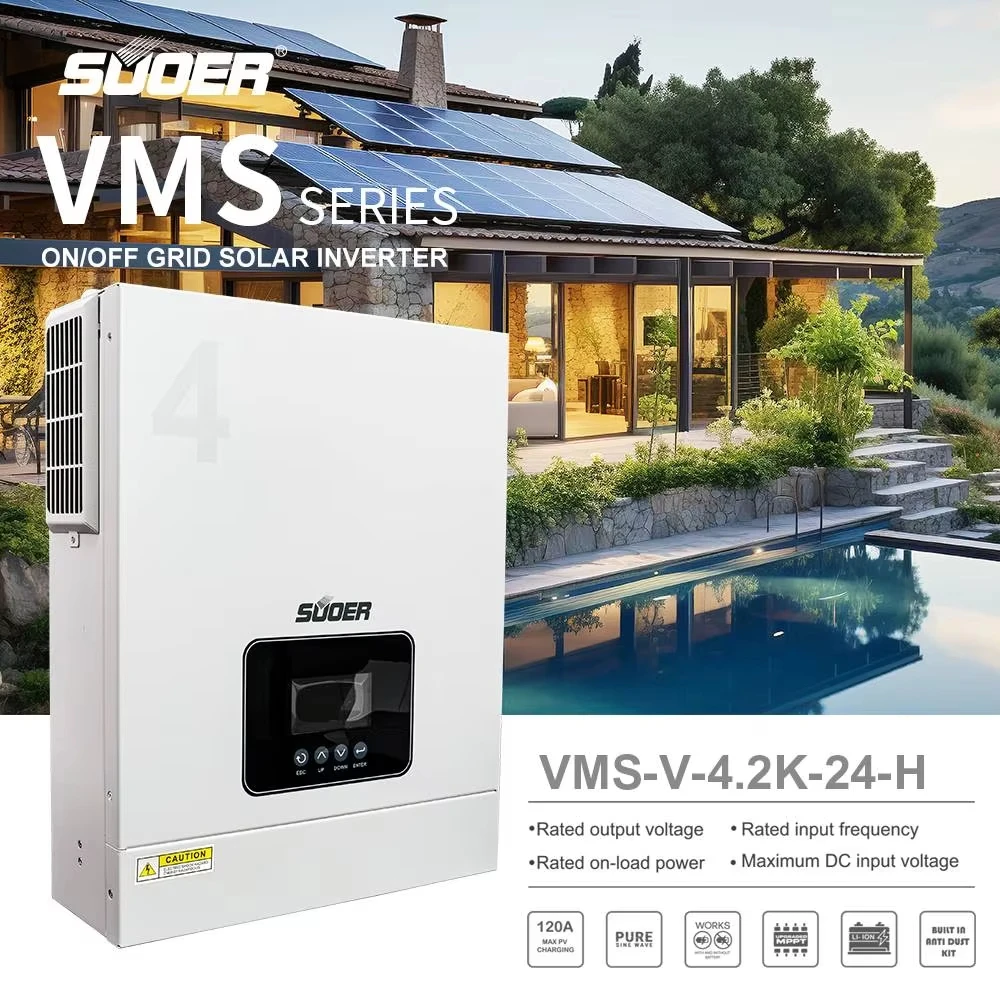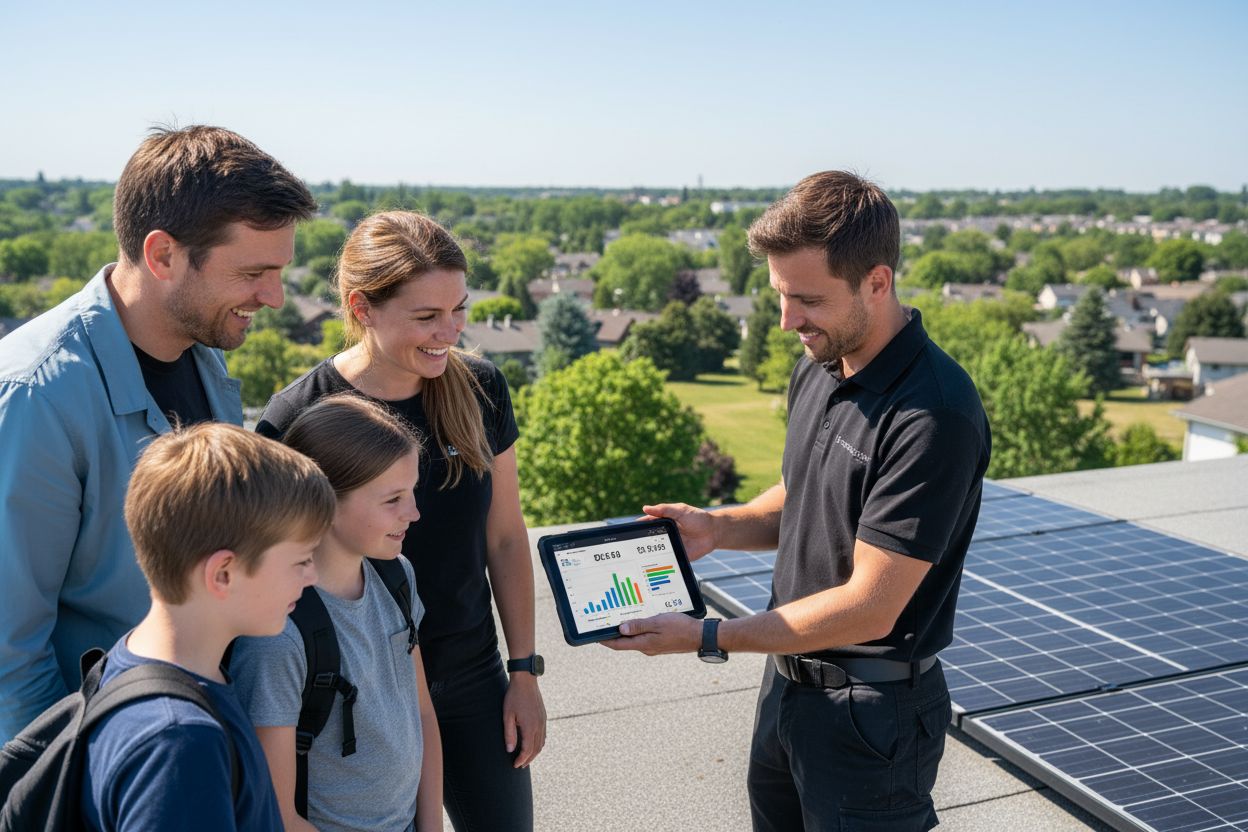

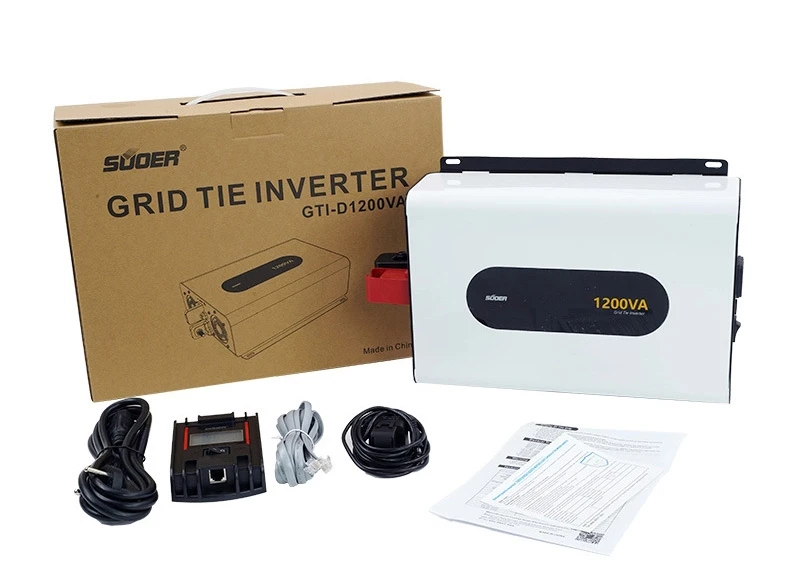

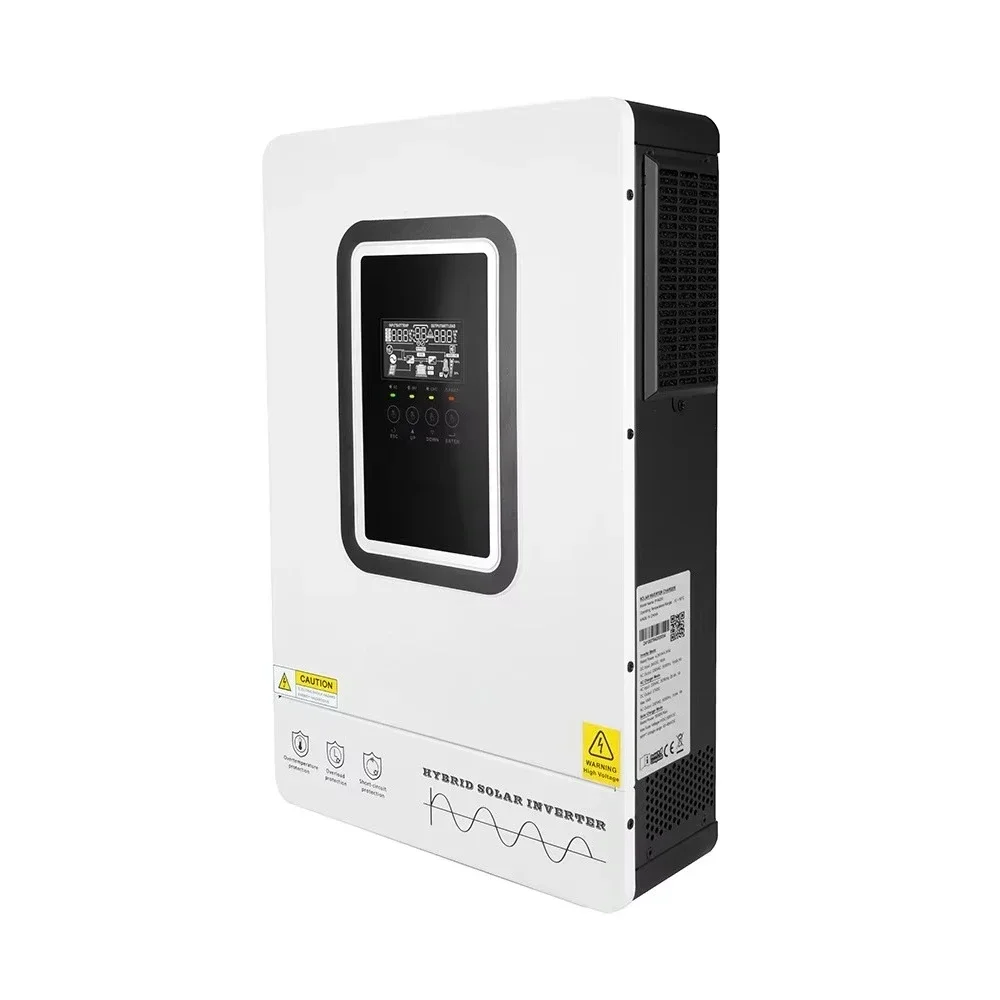
Solar inverters work quietly behind the scenes in nearly every solar power setup, handling a job most people never think about. Yet, the difference they make is staggering. Modern solar inverters can track and optimize power output in real time, helping households save up to 30 percent more energy compared to basic setups. You might assume their only task is to flip DC into AC power, but today’s inverters do much more. They actively manage the entire flow of solar energy, making each ray of sunshine work smarter—not just harder.
Table of Contents
- Defining A Solar Inverter: Function And Importance
- The Significance Of Solar Inverters In Renewable Energy
- How Solar Inverters Operate: A Technical Overview
- Key Types Of Solar Inverters And Their Applications
- Future Trends And Innovations In Solar Inverter Technology
Quick Summary
| Takeaway | Explanation |
|---|---|
| Solar inverters convert DC to AC electricity. | They transform electricity from solar panels into a usable form for homes and the grid, enabling practical energy use. |
| Inverters enhance energy management capabilities. | Modern inverters monitor performance, optimize energy output, and facilitate grid interaction for efficient energy distribution. |
| Advanced inverters support smarter grids. | They feature technologies that allow real-time communication with grids, improving power management and stability in energy distribution. |
| Different inverter types cater to specific needs. | Options like string inverters and microinverters serve various applications, ensuring optimal system performance under different conditions. |
| Innovation in inverters drives renewable energy growth. | Emerging technologies integrate AI and advanced systems, making inverters vital to the future of adaptable and sustainable energy systems. |
Defining a Solar Inverter: Function and Importance
A solar inverter is a critical component in photovoltaic systems that transforms direct current (DC) electricity generated by solar panels into alternating current (AC) electricity used by home appliances and the electrical grid. Research from the National Renewable Energy Laboratory highlights the crucial role these devices play in solar energy infrastructure.
The Core Purpose of Solar Inverters
At its fundamental level, a solar inverter acts as an electrical translator between solar panel output and household electrical systems. Solar panels produce DC electricity when sunlight strikes their photovoltaic cells, but most household electronics and electrical grids operate on AC electricity. Without an inverter, the electricity generated by solar panels would be unusable for standard electrical applications.
The conversion process involves sophisticated electronic circuitry that rapidly switches DC current to create a sine wave matching grid-standard AC electricity. This transformation enables seamless integration of solar energy into existing electrical networks, making renewable energy practical and accessible.
Key Functional Characteristics
Beyond simple electrical conversion, modern solar inverters offer additional sophisticated capabilities:
- Monitoring system performance and energy production
- Providing safety disconnection during grid failures
- Optimizing power output through maximum power point tracking
- Enabling grid interaction and potential energy feed-back mechanisms
By understanding solar benefits, consumers can appreciate how these devices are not just passive converters but active managers of renewable energy systems. The technology represents a sophisticated bridge between solar panel generation and practical electrical consumption, transforming raw solar energy into usable power for homes and businesses.
This table outlines the essential functions and advanced capabilities of modern solar inverters, helping you quickly scan the primary roles each inverter plays within a solar energy system.
| Functional Characteristic | Description |
|---|---|
| DC to AC Conversion | Transforms direct current from solar panels into grid-compatible alternating current |
| Performance Monitoring | Tracks energy production and system health in real time |
| Safety Disconnection | Provides automatic shutdown during grid failures to protect equipment and people |
| Maximum Power Point Tracking (MPPT) | Optimizes solar energy harvest by adjusting output for varying sunlight conditions |
| Grid Interaction and Feedback | Enables systems to synchronize with the grid and feed surplus energy back into the network |
| Harmonic Filtering | Improves the quality and stability of the AC signal delivered to appliances and the grid |
The Significance of Solar Inverters in Renewable Energy
Solar inverters represent a pivotal technology in the global transition towards sustainable energy systems, serving as more than just electrical conversion devices. Research from the International Energy Agency demonstrates their critical role in enabling widespread renewable energy adoption and grid integration.
Enabling Grid Connectivity and Energy Management
Inverters serve as sophisticated energy management systems that do far more than simple electrical conversion. They enable solar power systems to interact dynamically with electrical grids, facilitating complex energy exchange mechanisms. This technological capability allows residential and commercial solar installations to not only consume electricity but also potentially feed excess energy back into the broader electrical network.
The intelligent design of modern inverters includes advanced monitoring and control systems that track energy production, optimize performance, and ensure grid stability. These systems can automatically adjust power output, manage voltage fluctuations, and provide real-time performance data to users and utility companies.
Economic and Environmental Impact
The significance of solar inverters extends beyond technical functionality into broader economic and environmental domains. By enabling efficient renewable energy integration, these devices contribute to:
- Reducing carbon emissions and dependence on fossil fuels
- Lowering electricity generation costs
- Supporting decentralized energy production models
- Creating opportunities for smart grid development
Moreover, 7 types of solar technology are increasingly dependent on sophisticated inverter technologies to maximize energy harvest and system efficiency. As renewable energy infrastructure continues to evolve, inverters will play an increasingly central role in managing complex, interconnected energy ecosystems.
How Solar Inverters Operate: A Technical Overview
Solar inverters leverage complex electronic mechanisms to transform direct current (DC) electricity into alternating current (AC) electricity through precision engineering and advanced power electronics. Research from Sandia National Laboratories reveals the intricate technical processes underlying this critical energy conversion technology.
Electrical Conversion Mechanisms
At the core of solar inverter functionality are sophisticated semiconductor switches that rapidly alternate electrical current direction. These electronic components create a synthetic AC waveform by quickly switching DC current on and off, effectively mimicking the standard sine wave pattern used in household electrical systems. The switching occurs at microsecond speeds, ensuring smooth and consistent power transformation with minimal energy loss.
Pulse Width Modulation (PWM) serves as the primary technique for generating high-quality AC output. By controlling the duration and frequency of electrical pulses, inverters can precisely match grid voltage requirements and maintain stable power delivery across varying solar generation conditions.
Advanced Performance Optimization Techniques
Modern solar inverters incorporate several intelligent features that go beyond basic electrical conversion:
- Maximum Power Point Tracking (MPPT) algorithms to optimize energy harvest
- Real-time performance monitoring and diagnostic capabilities
- Automatic grid synchronization and safety disconnection mechanisms
- Harmonic filtering to improve electrical signal quality
Understanding solar cell technology becomes crucial when exploring these advanced inverter capabilities. The technology represents a sophisticated intersection of electrical engineering, power electronics, and renewable energy management, transforming solar panel output into reliable, grid-compatible electricity through precision electronic design.
Key Types of Solar Inverters and Their Applications
Solar inverters are not a one-size-fits-all technology, but rather a diverse range of specialized devices designed to meet specific energy conversion needs. Research from the National Renewable Energy Laboratory highlights the nuanced landscape of inverter technologies and their unique applications across different solar installations.
Residential and Commercial Inverter Types
Three primary inverter categories dominate the solar energy market, each with distinctive characteristics and ideal implementation scenarios.
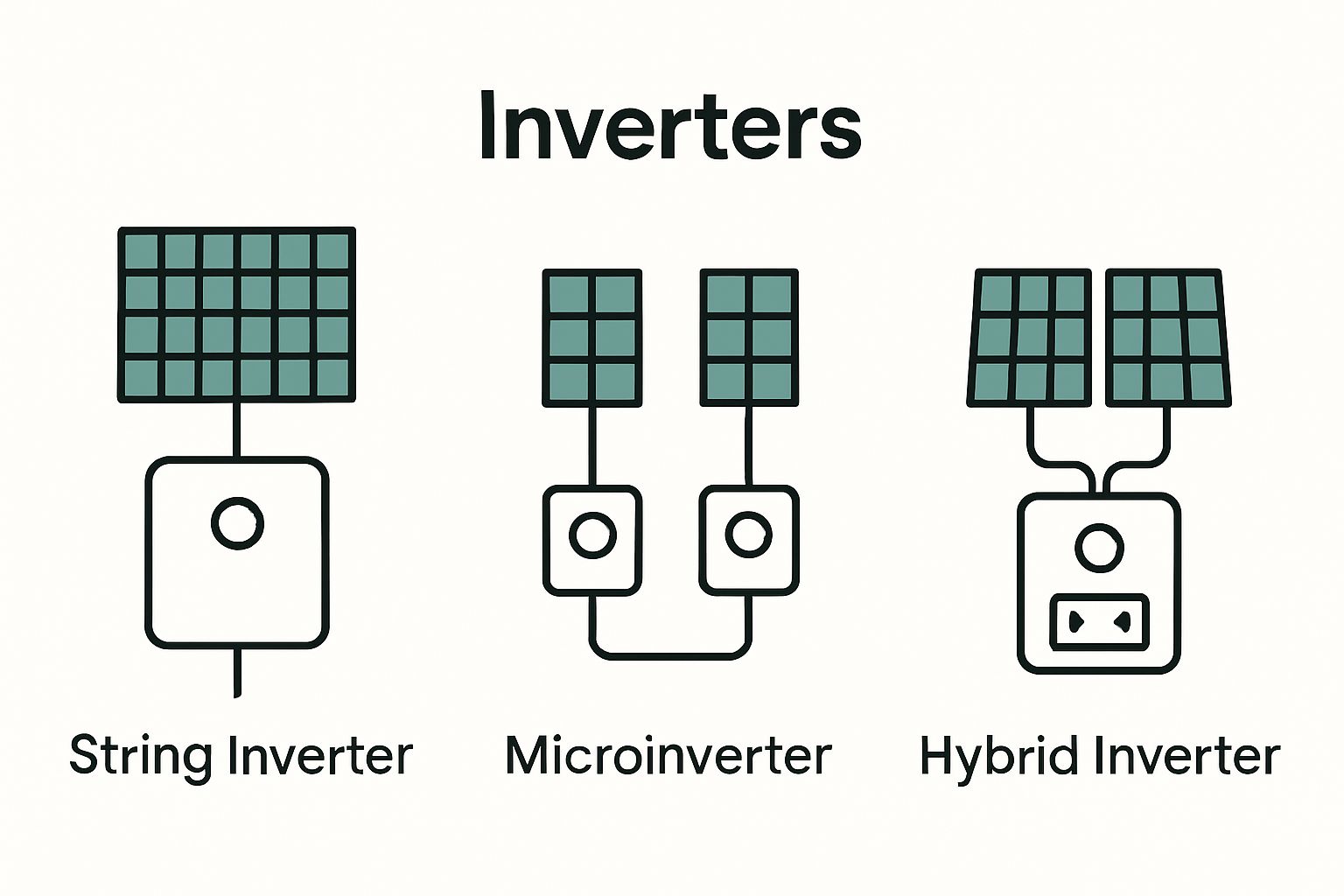 String inverters represent the most traditional approach, connecting multiple solar panels in a series and converting their combined DC output. These inverters are cost-effective and work exceptionally well in installations with consistent sunlight exposure and minimal shading.
String inverters represent the most traditional approach, connecting multiple solar panels in a series and converting their combined DC output. These inverters are cost-effective and work exceptionally well in installations with consistent sunlight exposure and minimal shading.
Microinverters offer a more granular approach by attaching to individual solar panels, enabling panel-level optimization and performance monitoring. This design mitigates performance losses from panel shading or degradation, providing more flexible and resilient solar energy systems. Particularly beneficial in complex roof configurations or environments with variable sunlight conditions.
Specialized Inverter Applications
Beyond standard residential and commercial applications, solar inverters have evolved to serve specialized energy ecosystems:
- Hybrid inverters supporting battery storage integration
- Grid-interactive inverters enabling two-way energy exchange
- Central inverters designed for utility-scale solar farms
- Portable inverters for mobile or temporary power solutions
What to Know About Solar Panels becomes crucial context when understanding these diverse inverter technologies. Each type represents a sophisticated solution tailored to specific energy generation environments, reflecting the dynamic and innovative nature of modern renewable energy infrastructure.
To clarify the differences between key solar inverter types and their common applications, the following table compares their primary characteristics and ideal use cases.
| Inverter Type | Main Features | Typical Applications |
|---|---|---|
| String Inverter | Connects multiple panels in series, cost-effective, suitable for unshaded areas | Standard residential and commercial with consistent sunlight |
| Microinverter | Attaches to individual panels, panel-level optimization, mitigates shading losses | Roofs with shading or complex layouts |
| Hybrid Inverter | Supports battery storage, enables energy storage and grid exchange | Homes with battery backup or off-grid systems |
| Central Inverter | Large-scale design, handles high power loads, centralized control | Utility-scale solar farms |
| Portable Inverter | Compact, temporary use, supplies mobile or remote power | Mobile, RV, or temporary needs |
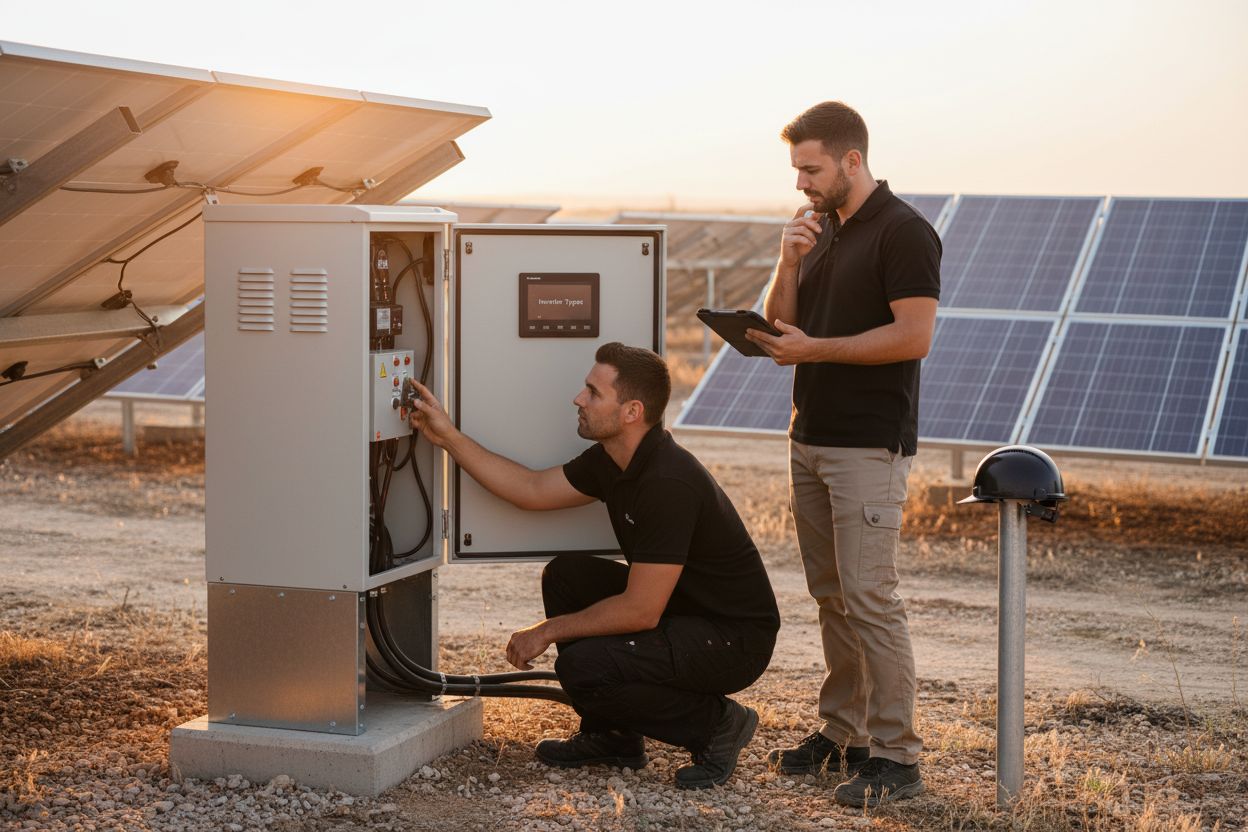
Future Trends and Innovations in Solar Inverter Technology
Solar inverter technology is rapidly evolving, driven by the urgent need for more efficient, intelligent, and adaptable renewable energy solutions. Research from the National Renewable Energy Laboratory highlights the transformative potential of emerging inverter technologies that promise to revolutionize how we generate, manage, and distribute solar energy.
Intelligent Grid Integration Technologies
Next-generation solar inverters are becoming increasingly sophisticated, moving beyond simple electrical conversion to serve as intelligent energy management systems. Smart inverters now incorporate advanced communication protocols that enable real-time interaction with electrical grids, allowing for dynamic power management and grid stabilization. These technologies can automatically adjust power output, provide voltage support, and rapidly respond to grid conditions, transforming solar installations from passive energy generators to active grid participants.
Artificial intelligence and machine learning algorithms are being integrated directly into inverter systems, enabling predictive maintenance, performance optimization, and more nuanced energy generation strategies. This technological evolution allows solar installations to become more responsive, efficient, and resilient.
Emerging Technological Capabilities
The future of solar inverter technology promises groundbreaking innovations across multiple domains:
- Enhanced cybersecurity features to protect distributed energy resources
- Advanced thermal management systems for improved efficiency
- Seamless integration with energy storage technologies
- Multi-mode operation supporting complex energy ecosystem interactions
Understanding What is the Latest Solar Panel Technology provides crucial context for comprehending these transformative inverter developments. These technological advances represent a significant leap towards more intelligent, adaptive, and sustainable energy infrastructure, positioning solar inverters as critical components in the global transition to renewable energy systems.
Ready to Make Informed Decisions About Solar Inverters?
Choosing the right solar inverter is an important step on your journey to efficient and reliable solar power. Many readers struggle with understanding the technical differences between inverter types, optimizing their system, or ensuring a safe grid connection. If you have found the concepts of maximum power point tracking, grid synchronization, or inverter safety a challenge, you are not alone.

At HTEXS, our mission is to break down these complex topics and help you compare the latest solar technology with real-world product reviews, step-by-step guides, and clear answers to your questions. Take charge of your renewable energy journey with the right information. Explore our comprehensive resources on understanding solar benefits and other tech solutions. Visit HTEXS now and get the knowledge you need to choose your next solar upgrade with confidence.
Frequently Asked Questions
What is the main function of a solar inverter?
A solar inverter converts direct current (DC) electricity generated by solar panels into alternating current (AC) electricity, which is used by home appliances and the electrical grid.
Why are solar inverters important in solar energy systems?
Solar inverters are crucial because they enable the integration of solar energy into household and grid systems, ensuring that the electricity generated by solar panels can be used effectively and safely.
What are the different types of solar inverters?
The main types of solar inverters include string inverters, microinverters, hybrid inverters, and central inverters. Each type serves specific application needs, from residential setups to large utility-scale installations.
How do modern solar inverters optimize energy production?
Modern solar inverters utilize techniques like Maximum Power Point Tracking (MPPT) to optimize energy harvest from solar panels, along with monitoring systems to track performance and ensure efficient operation.
Recommended
- What to Know About Solar Panels: Understanding Their Impact – htexs.com
- Understanding Solar Cell Technology: How It Works – htexs.com
- Understanding the Solar Benefits: Harnessing Energy Power – htexs.com
- Understanding What is the Latest Solar Panel Technology – htexs.com


